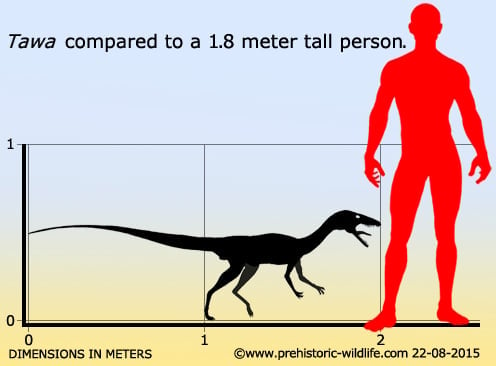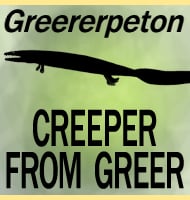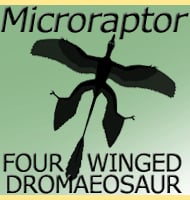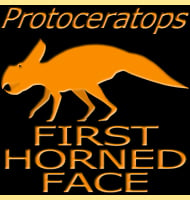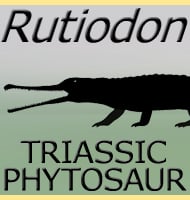In Depth
Tawa is yet another dinosaur genus from the late Triassic of the Ghost Ranch North America, and as you might expect, one quite primitive in form. Tawa were bipedal dinosaurs of the theropod line, noted for having femurs that were proportionately quite long when compared to the lower leg bones. Tawa also had a kink between the maxilla and premaxillae, the tooth bearing bones of the upper jaw. This means that in life Tawa may have had a notch in the upper jaw similar to Dilophosaurus of the early Jurassic, though perhaps not quite as pronounced. Tawa are also noted as having a more slender build compared to other early dinosaurs, a trait that would continue to some later descendants.
One area of interest about Tawa which has wider implications for other dinosaurs, is that the neck vertebrae are known to have air sacs, almost identical to the air sacs of birds. This reveals that Tawa had an avian like (bird-like) respiratory system, something which has been seen in other dinosaur genera such as the sauropodomorph Plateosaurus and the late Cretaceous theropod Aerosteon. The presence of an avian-like respiratory system in Tawa however is an indication that this system first evolved in the early dinosaurs of the Triassic. This is also yet further support for the theory that birds are directly evolved from dinosaurs, and is an indicator the avian respiratory system is at least as old as the late Triassic. This kind of respiratory system also suggests that Tawa had an endothermic metabolism, meaning that it lived more as a ‘warm-blooded’ creature than a ‘cold-blooded’ one.
In terms of evolutionary placement, Tawa seems to have been more advanced than forms such as Eoraptor and Herreasaurus, but not as advanced as other dinosaur genera like Coelophysis. Also, because Coelophysis is known to have lived in the same time and locations as Tawa, then it raises the notion that Tawa may have been a late surviving form.
The point of origin of the Dinosaurs is still thought to have been South America since this is where the oldest true dinosaur genera are known from. However the discovery of Tawa has helped to establish that by the late Triassic there were at least several genera of early dinosaurs living in North America. Dinosauromorph reptiles (similar to dinosaurs but not quite dinosaurs) are also starting to be discovered in higher numbers, and in the future Africa may also become a key area of study in our wider understanding of early dinosaur evolution.
Further Reading
- A complete skeleton of a Late Triassic saurischian and the early evolution of dinosaurs, S. J. Nesbitt, N. D. Smith, R. B. Irmis, A. H. Turner, A. Downs & M. A. Norell - 2009.
